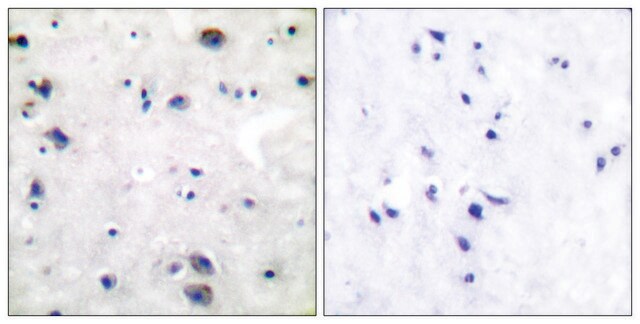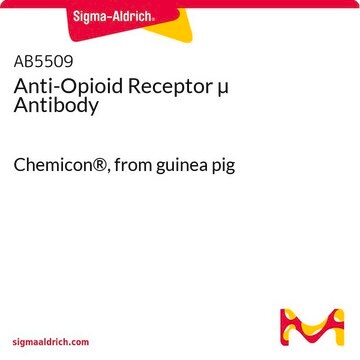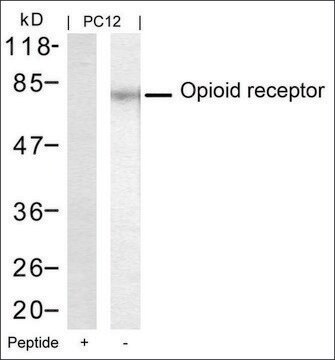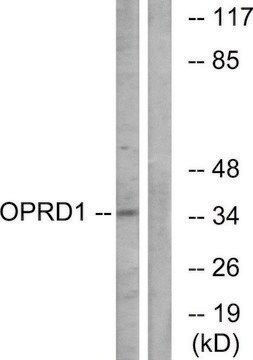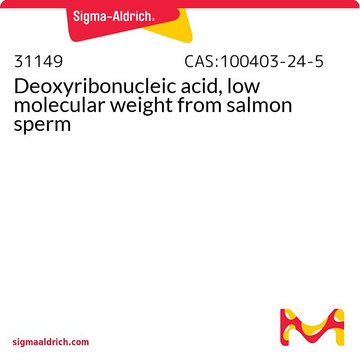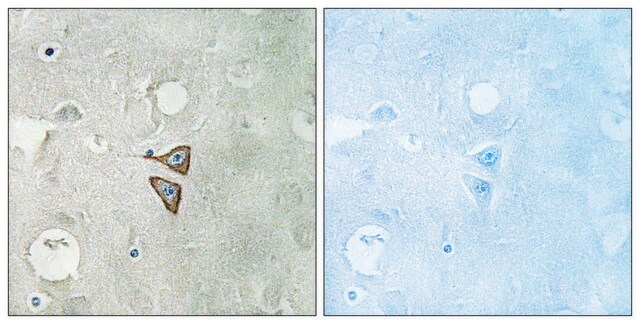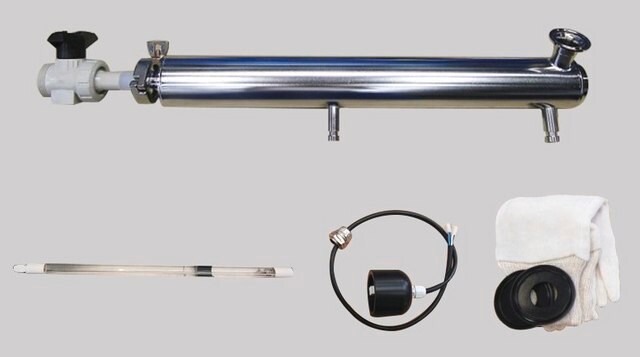AB5511
Anti-Opioid Receptor Antibody, µ, pain
serum, Chemicon®
Synonim(y):
mu opiate receptor, opioid receptor, mu 1
About This Item
Polecane produkty
pochodzenie biologiczne
rabbit
Poziom jakości
forma przeciwciała
serum
rodzaj przeciwciała
primary antibodies
klon
polyclonal
reaktywność gatunkowa
mouse, primate, rat, human
producent / nazwa handlowa
Chemicon®
metody
immunocytochemistry: suitable
immunohistochemistry: suitable
western blot: suitable
numer dostępu NCBI
numer dostępu UniProt
Warunki transportu
dry ice
docelowa modyfikacja potranslacyjna
unmodified
informacje o genach
human ... OPRM1(4988)
Opis ogólny
Specyficzność
Immunogen
Zastosowanie
1:2,500-1:5,000 dilution of a previous lot was used.
Western blot:
1:1,000 dilution of a previous lot was used.
Immunocytochemistry:
1:2,500-1:5,000 dilution of a previous lot was used.
Optimal working dilutions must be determined by the end user.
Neuroscience
Neuroinflammation & Pain
Jakość
Western Blot Analysis:
1:500 dilution of this antibody detected Opioid Receptor on 10 µg of Human Liver lysate.
Opis wartości docelowych
Postać fizyczna
Przechowywanie i stabilność
Komentarz do analizy
Spinal cord, liver lysate
Inne uwagi
Informacje prawne
Oświadczenie o zrzeczeniu się odpowiedzialności
Nie możesz znaleźć właściwego produktu?
Wypróbuj nasz Narzędzie selektora produktów.
Kod klasy składowania
10 - Combustible liquids
Klasa zagrożenia wodnego (WGK)
WGK 1
Certyfikaty analizy (CoA)
Poszukaj Certyfikaty analizy (CoA), wpisując numer partii/serii produktów. Numery serii i partii można znaleźć na etykiecie produktu po słowach „seria” lub „partia”.
Masz już ten produkt?
Dokumenty związane z niedawno zakupionymi produktami zostały zamieszczone w Bibliotece dokumentów.
Nasz zespół naukowców ma doświadczenie we wszystkich obszarach badań, w tym w naukach przyrodniczych, materiałoznawstwie, syntezie chemicznej, chromatografii, analityce i wielu innych dziedzinach.
Skontaktuj się z zespołem ds. pomocy technicznej
